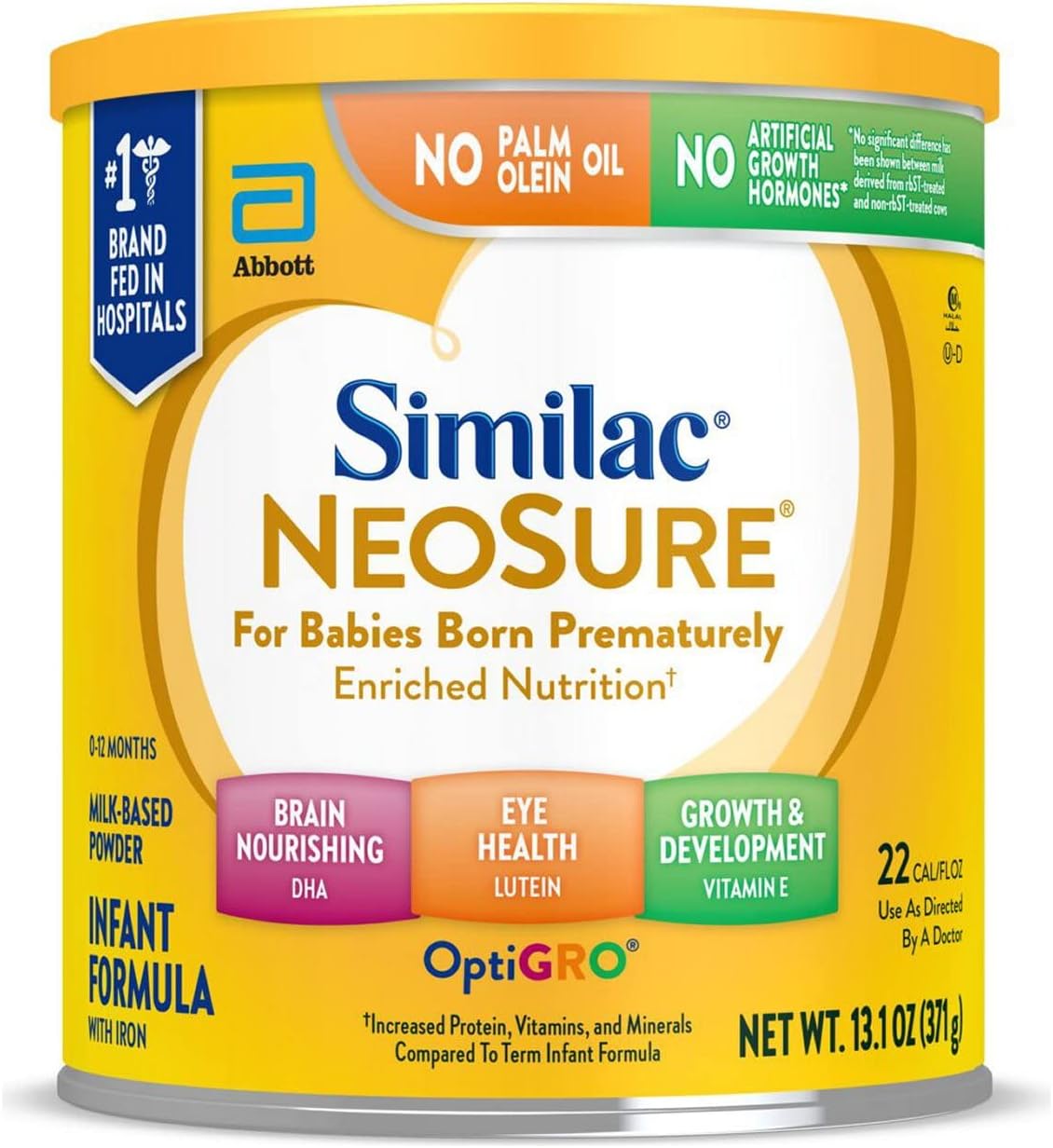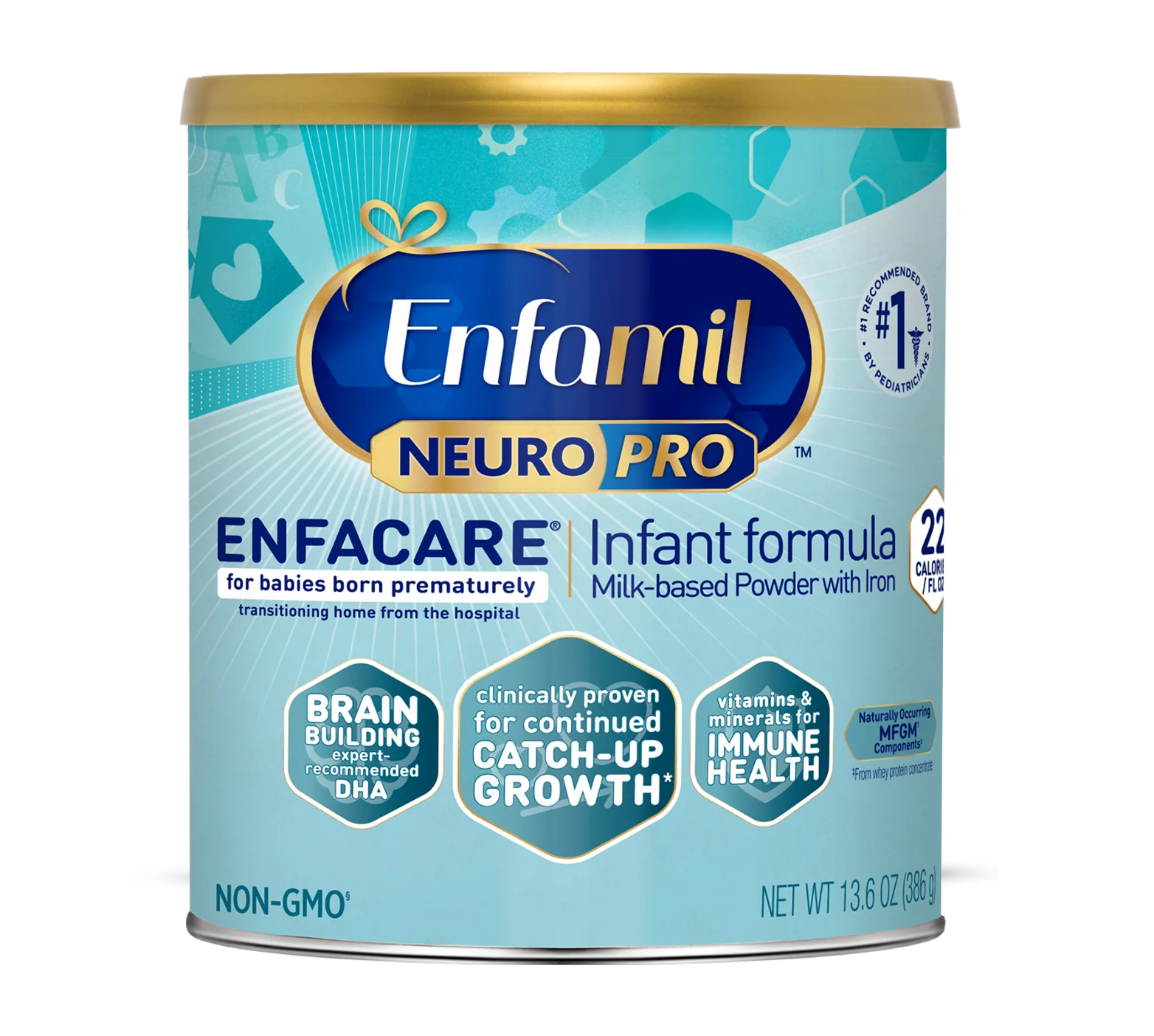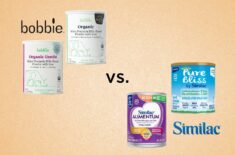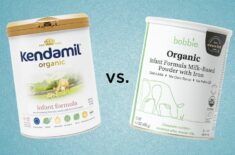Overview
A 2022 Early Human Development randomized controlled trial showed no difference in preterm infants’ body composition* whether they were provided a diet of human-derived breast milk and fortifier or cow milk and fortifier. (1)
*Body composition is defined as the combination of ATM (adipose tissues or body fat) and N-ATM (non-adipose tissue mass; this can be comprised of proteins)
The results of this 2022 study can help healthcare providers choose interventions to help premature babies grow at the ideal rates using possible fortifiers with available milk sources. (1)
Preterm babies, born 3+ weeks before their expected due date, have a much lower birth weight than those born closer to their scheduled birth. Aside from being smaller and lighter, they often need close medical attention because their body’s systems didn’t have time to fully develop in the womb. (2)
They’re usually placed in the NICU for close monitoring, with the primary goal of keeping them safe while also helping them gain weight and develop to ‘full-term.’
Like other infants, milk helps them grow. Yet there’s a long-standing debate on the best way to feed babies.
Breast Milk Or Formula?
A previous report showed that formula companies might be exploiting parents’ fears to line their pockets, making us feel that baby formulas are better because they’re tailor-made to provide the ‘best’ nutrition. (3)
And while breast milk is often touted as the gold standard for babies, not all moms can or choose to breast feed their babies.
Further, conflicting study results on using breast milk and cow milk-based formula can be confusing.
For example, a 2019 randomized controlled trial in the Archives of Disease in Childhood – Fetal and Neonatal Edition journal showed that premature babies with exclusive breast milk intake appear to have slower weight gain than formula-fed babies. (4)
Yet a 2022 follow-up study conducted by some of the 2019 study authors showed that with fortification for both, there isn’t a difference in preterm babies’ body compositions when fed with human breast milk or baby formula. (5)
This means that with the right fortification, breast milk and formula can work for premature babies.
What could have caused these differences in the study results? How are premature babies different from babies born full-term? And what can you do for your premature infant?
Continue reading to learn more.
Challenges Of Feeding Preterm Infants
Digestive problems are among the most common health issues that affect premature babies – and feeding them can be tricky because of the following reasons: (2)(6)(7)
- Most premature babies cannot directly take milk from their mom’s breast or a baby bottle. Hospitals usually use a special feeding tube to deliver nutrition straight to their tummies.
- Baby formulas made for premature babies are available. Yet healthcare providers must also be extra careful because several studies have shown that these have a higher risk of causing NEC (necrotizing enterocolitis). This serious and life-threatening gut disease leads to the death of bowel tissues. (6)
- Often, preemie moms might not be yet ready to produce and pump adequate breast milk to meet their needs.
- Donor breast milk from accredited milk banks can be an option, but there’s no guarantee they’ll always be available in your area.
- Some babies might even require TPN (total parenteral nutrition) via IV (intravenous) feedings.
Clinical Trial (2022) Compares Preterm Infants’ Body Composition Based On Their Diet
Background Of The Study
In the 2019 randomized controlled trial mentioned above, the researchers found that premature babies (born at <31 weeks of gestation) provided a diet of exclusive breast milk (without fortification) appear to have slower weight gain than those fed with formula. (4)
The babies in this study were weighed and underwent whole-body MRI (magnetic resonance imaging) when they reached term (within 37-44 weeks postmenstrual age). (4)
Predominantly formula-fed infants in this study weighed around 283.6 g more than the exclusively breastfed group. (4)
These formula-fed babies also had higher non-adipose tissue mass (an indicator of total muscle mass and their body protein content) of around 257.4 g than their breastfed counterparts. (4)
The study results made the authors curious about whether this pattern can be altered with fortification or later diet modifications. (4)
These questions led to a follow-up study published in 2022 using fortifications on both breast milk and formula diets. (5)
Participants & Study Design
The 2022 study focused on premature babies born under 30 weeks gestation. They were assigned into two groups (no subgroups). (5)
The exclusive human milk group received the following:
- ‘Ready to Feed Human Preterm 26’ formula or RTF 26 (a type of human milk formula)
- Prolacta Biosciences (human milk-based fortifier)
The cow milk-based supplementation group received:
- Preterm formula (designed for premature babies)
- Standard cow milk-based fortifier
The researchers explained that commercially available “fortifiers” have only been based on cow’s milk in the past. So, premature babies given fortifiers haven’t had an “exclusive human milk diet” until the Prolacta human milk-based fortifiers (used in this study) became available in 2006. (5)(10)
It’s important to note that all the babies in this study also received OMM (their own mom’s milk). They were randomized into two groups that are based on interventions to make up for any shortfalls:
In both groups, fortification was provided once the babies reached a feed volume of 150 ml/kg per day (at least 50 ml of this was OMM). (5)
Both groups had a maximum intake of 165 ml/kg/day, which provided a protein intake of around 3.7 to 4.6 g/kg/day.
Their intakes varied for the following:
Carbohydrates
- 8.2 to 12.2 g/kg/day for the human milk group
- 13 to 14.7 g/kg/day for the cow milk group
Fats
- 8.2 to 9.2 g/kg/day for the human milk group
- 6.3 to 6.4 g/kg/day for the cow milk group
Total Non-Protein Energy
- 115 to 141 kcal/kg/day for the human milk group
- 115 to 123 kcal/kg/day for the cow milk group
The trial interventions ended at 34 weeks gestation for both groups, and the babies were assessed using whole-body MRI. (5)
Clinical Trial Results & Conclusions
In the 2022 follow-up study, the researchers found no significant difference in preterm babies’ body compositions, whether fed with fortified human breast milk or baby formula. (5)
As you can see in the table below, the two groups had similar results for different tests.

FAQs
What Are The Physical Differences Between Term And Preterm Babies?
Aside from their gestational age at birth, here are some signs that your baby is preterm: (7)
- Smaller size (their head is large compared with their body)
- Fine hair (called lanugo) covers much of the body; it keeps them warm in the womb
- Sharper, less rounded features than a full-term baby’s; it’s because they have less adipose tissues or body fats
- Possible breathing troubles
- Possible feeding issues
- Low body temperature right after their birth
Is The Body Composition Of Preterm Infants The Same As That Of Full-Term Infants?
No. Preterm infants usually have a smaller size than full-term babies at birth. (7)
However, several studies have shown that at term (values measured when they reach their gestational term of 38 weeks), premature babies tend to have a higher percent fat or fat mass index than term infants. (8)(9)
For example, the absolute fat mass results at 40 weeks PMA (postmenstrual age; calculated as gestational age + postnatal age) in a 2020 Nutrients journal study were as follows: (9)
- Preterm infants: 490 g
- Term-born infants: 360 g
The researchers in these studies were unsure why these babies tend to develop more adipose (fatty) tissues by the time they reach their term. (8)(9)
Available Formulas For Preemies
These formulas are formulated to support the catch-up growth of premature babies and those born with low birth weights:
Similac NeoSure Infant Formula
Enfamil NeuroPro EnfaCare Infant Formula
Enfamil Premature Infant Formula
They typically have more proteins, minerals, vitamins, and calorie count than regular baby formulas.
WARNING: Always consult your pediatrician before switching to a new formula, especially if you have a preemie.
Learn more about these formulas in our comparison review between Similac and Enfamil.
Other Baby Formula Articles & Guides
- Can You Mix Breast Milk & Formula?
- Serenity Kids’ Toddler Formula
- FDA Announces Infant Formula Study
- Formula Companies Possibly Exploiting Parents’ Fears For Profits
- The Best Baby Bottles
- The Best Formula Dispensers
- Travel Formula Dispensers
- How To Sanitize Baby Bottles
Formula Recalls To Monitor
- Gerber Good Start SootheProTM Powdered Infant Formula (2023)
- Enfamil ProSobee Simply Plant-Based Infant Formula (2023)
- ByHeart Whole Nutrition Infant Formula (2022)
- Similac recall (2022)
- Alimentum (2022)
- EleCare (2022)
- Angel formula recall (2022)
- Able Groupe formula recall (2021) for Holle, HiPP, Kendamil, and Bioland (Lebenswert)
- Parent’s Choice Advantage infant formula recall (2019)
- Nutricia KetoCal 3:1 (2022) – not a recall, only a safety alert for Cronobacter
References
(1) https://www.sciencedirect.com/science/article/pii/S0378378222000822
(2) https://kidshealth.org/en/parents/preemies.html
(3) https://www.thelancet.com/journals/lancet/article/PIIS0140-6736(23)00118-6/fulltext
(4) https://fn.bmj.com/content/104/3/F306.abstract
(5) https://www.sciencedirect.com/science/article/pii/S0378378222000822
(6) https://www.ncbi.nlm.nih.gov/pmc/articles/PMC5227976/
(7) https://www.mayoclinic.org/diseases-conditions/premature-birth/symptoms-causes/syc-20376730
(8) https://www.nature.com/articles/pr2015273
(9) https://www.mdpi.com/2072-6643/12/2/288
(10) https://www.prolacta.com/en/about-us/















